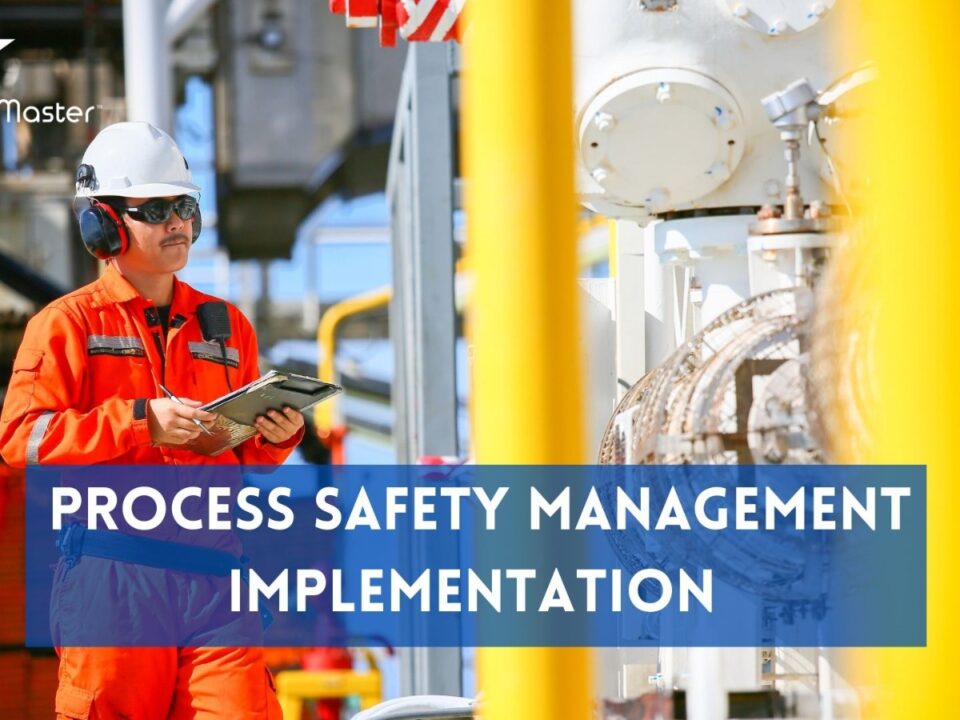A Comprehensive Guide to Developing Process Safety Information for Process Industries in India

Building a Shock-Proof Workplace: Strategies for Implementing Successful Electrical Safety Audits in Indian Industries
November 29, 2024
Understanding the Vital Importance of Fire Adequacy Study and Designing in Manufacturing Industries: A Complete Guide
December 4, 2024In this article, we delve deep into a matter of utmost importance: the development of process safety information for process industries in India. With the growing concern for safety in the workplace, it is imperative for organizations to establish robust safety measures to protect both their employees and the environment. Join us as we navigate the intricate landscape of process safety information, offering valuable insights, practical tips, and expert advice to help you navigate this challenging realm. Be prepared to gain a comprehensive understanding of the subject, equip yourself with the necessary knowledge, and ultimately elevate your organization’s safety standards to new heights. Safety should never be compromised, and we promise to provide you with the tools to ensure it won’t be.
Introduction
Process safety is of utmost importance in the process industries, where a single mishap can have disastrous consequences. Developing accurate and comprehensive Process Safety Information (PSI) plays a crucial role in mitigating risks and ensuring the safety of workers, the environment, and surrounding communities. In India, where industrial growth is rapidly expanding, it becomes imperative for process industries to adhere to regulatory requirements and implement effective strategies for developing PSI. In this comprehensive guide, we will delve into the intricacies of developing Process Safety Information for process industries in India. We will explore the steps involved in identifying process hazards, collecting relevant data, analyzing potential risks, documenting crucial information, and more. By following these guidelines meticulously, companies can not only comply with legal obligations but also foster a culture of safety that prioritizes the well-being of all stakeholders
Understanding Process Safety Information (PSI)
The comprehension of Process Safety Information (PSI) is paramount in the realm of process industries in India. PSI encompasses a vast array of detailed data and documentation that must be diligently collected, analysed, and maintained. It serves as a comprehensive repository of essential information about the various processes and systems employed within an industrial facility. In essence, PSI acts as an illuminating guidebook that illuminates the intricacies and potential hazards associated with these processes. Delving into the realm of PSI reveals its multifaceted nature. It encompasses engineering drawings, equipment specifications, operating procedures, safety data sheets (SDS), material safety data sheets (MSDS), technical manuals, process flow diagrams (PFDs), piping and instrumentation diagrams (P&IDs), hazard assessments, incident investigation reports, and much more. This treasure trove of knowledge not only aids in identifying potential risks but also assists in devising effective control measures to mitigate these risks.
By thoroughly grasping the significance of PSI, process industries in India can ensure optimal operational safety. Empowering themselves with this wealth of information equips them to navigate through potential hazards with adeptness and vigilance. Embracing a proactive approach towards developing PSI ensures that industries are fortified against adverse events while fostering an environment conducive to growth, creativity, and prosperity.
Importance of Developing PSI in Process Industries
Developing Process Safety Information (PSI) is of paramount importance in process industries across India. It serves as the foundation for effective risk management, ensuring the safety and well-being of both workers and the surrounding communities. PSI provides a comprehensive understanding of potential hazards, allowing industries to proactively identify, assess, and mitigate risks associated with their operations. Creating thorough PSI enables process industries to establish robust safety protocols and procedures. By analysing process hazards and identifying potential risks, organizations can implement preventive measures that significantly reduce the likelihood of accidents or incidents. This not only protects human lives but also safeguards critical infrastructure, minimizes environmental impacts, and helps maintain public trust.
Moreover, developing PSI aligns with regulatory requirements imposed by governing bodies in India. Compliance with these regulations not only ensures legal adherence but also demonstrates a commitment to responsible operation. By investing time and resources into developing comprehensive PSI, process industries can enhance their reputation as socially responsible enterprises that prioritize safety above all else.
In conclusion, the development of Process Safety Information in process industries is instrumental in fostering a safe working environment while mitigating potential risks. By recognizing its significance and adhering to regulatory requirements, organizations can cultivate a culture of safety that resonates throughout their operations. This proactive approach ultimately leads to improved productivity, increased stakeholder confidence, and enhanced sustainable development within India’s process industries.
Regulatory Requirements for Developing PSI in India
The development of Process Safety Information (PSI) in process industries is not only a recommended practice but also a legal requirement in India. The government, recognizing the significance of process safety, has implemented stringent regulations to ensure the safety and well-being of workers and communities. Under the Factories Act, 1948, every occupier of a factory in India is obligated to develop and maintain accurate and up-to-date PSI. The Occupational Safety, Health, and Working Conditions Code (OSHWC), introduced in 2020, further emphasizes the importance of PSI. It mandates that process industries must identify potential hazards associated with their operations and possess comprehensive PSI to mitigate risks effectively.
Compliance with these regulatory requirements not only guarantees a safer working environment but also instils confidence among stakeholders. By adhering to these guidelines, process industries can demonstrate their commitment towards employee welfare, environmental protection, and sustainable development. It is through such proactive measures that India’s industrial landscape can thrive while ensuring the utmost safety standards are upheld at all times.
Steps to Develop Process Safety Information
Begin the process by conducting a thorough analysis of the industrial operations, identifying all potential hazards and risks associated with each step. Delve into every aspect of the process, from raw material handling to storage, transportation, and usage. This comprehensive evaluation will help create a solid foundation for developing process safety information.
Collecting Relevant Data and Documentation:
Gather all pertinent data related to the identified hazards. This includes information on chemicals, their properties, safety data sheets (SDS), operating procedures, equipment specifications, piping diagrams, and any previous incident reports. The key is to compile information from reliable sources to ensure accuracy and comprehensiveness in developing Process Safety Information.
Analysing and Evaluating Process Hazards:
Conduct a detailed analysis of each identified hazard using established methodologies such as Hazard Identification (HAZID), Hazard Operability Study (HAZOP), or Failure Modes and Effects Analysis (FMEA). Evaluate potential consequences of these hazards including fires, explosions, toxic releases or environmental impacts. By thoroughly assessing these risks, you can develop effective mitigation measures.
Documenting Process Safety Information:
Once all necessary data has been collected and analysed, proceed with documenting the process safety information in a clear and concise manner. Include detailed descriptions of each hazard identified along with their potential consequences. Provide recommendations on preventive measures such as engineering controls or administrative procedures that can be implemented to minimize or eliminate these risks.
Reviewing and Updating PSI:
Regularly review the developed process safety information to ensure it remains current and relevant. As technology advances or regulations change over time, updating PSI becomes crucial in maintaining an effective safety management system
Identifying Process Hazards and Potential Risks
Identifying Process Hazards and Potential Risks: The critical first step in developing Process Safety Information (PSI) is to identify process-related hazards and potential risks within the industrial setting. This involves a meticulous examination of all components, including equipment, chemicals, and operating procedures. By conducting a thorough hazard analysis, industries can proactively identify vulnerabilities and mitigate potential accidents or disasters.
Delving into the intricate realm of process hazards requires a multidisciplinary approach. Engaging experts from various fields such as engineering, chemistry, and safety professionals ensures a comprehensive assessment. By bringing together diverse perspectives and knowledge, industries can gain valuable insights to distinguish potential risks in their operations.
This phase entails an in-depth evaluation of different scenarios that may lead to hazardous situations – from chemical reactions gone awry to equipment failures or human error. It necessitates the identification of possible worst-case scenarios as well as less severe incidents that could accumulate over time. This holistic evaluation empowers industries to develop robust preventive measures that enhance safety protocols while fostering an optimistic work environment where employees feel secure in their roles.
Collecting Relevant Data and Documentation
Collecting Relevant Data and Documentation: In this pivotal phase of developing Process Safety Information (PSI), diligent data collection and documentation are paramount. By carefully compiling comprehensive information, process industries in India can ensure a strong foundation for risk assessment and management.
To begin, it is crucial to identify all relevant sources of data, including equipment specifications, operating procedures, and maintenance records. This valuable documentation will provide insights into the intricacies of the process systems employed within an organization. Moreover, gathering historical incident reports and near-miss data allows companies to learn from past experiences and strengthen their safety practices.
Furthermore, engaging with subject matter experts across various departments enhances the accuracy and completeness of collected data. Collaboration between operators, engineers, maintenance personnel, and safety professionals ensures a holistic approach to capturing crucial details about equipment configuration, operating conditions, raw materials properties, potential hazards involved in each process step.
By meticulously collecting relevant data and documentation during this stage of developing PSI in India’s process industries, organizations pave the way for effective risk analysis and mitigative measures. This systematic approach fosters confidence in understanding the intricacies of existing processes while encouraging a culture of proactive safety within the industry as a whole.
Analysing and Evaluating Process Hazards
The Analysing and Evaluating Process Hazards section is an integral part of developing comprehensive Process Safety Information (PSI) in process industries in India. It involves a meticulous examination of potential risks and hazards that may arise during the operational phase of a process facility. A systematic approach is employed, considering various factors such as equipment malfunctions, human errors, external threats, and environmental impacts. Within this section, engineers utilize sophisticated techniques like Hazard and Operability Studies (HAZOP), Fault Tree Analysis (FTA), and Quantitative Risk Assessment (QRA) to identify possible hazards and their likelihood of occurrence. By scrutinizing each step of the process from raw material handling to end product delivery, potential dangers can be pinpointed and evaluated. This critical analysis aims to ensure that appropriate control measures are implemented to mitigate these risks effectively.
Analysing and evaluating process hazards allows companies to enhance safety measures, protect employees’ well-being, safeguard the environment, and prevent financial losses due to accidents or incidents. By adopting a proactive approach towards hazard identification, businesses can not only comply with regulatory requirements but also inspire confidence among stakeholders regarding their commitment to safety excellence.
Documenting Process Safety Information
In order to ensure that process safety information is effectively captured and maintained, it is crucial for process industries in India to establish a robust documentation system. This requires careful attention to detail and an organized approach. The documentation process involves compiling all relevant data and information related to the process design, equipment specifications, material properties, and operating procedures. One key aspect of documenting process safety information is the creation of detailed P&IDs (Piping and Instrumentation Diagrams). These diagrams provide a visual representation of the process flow, equipment layout, and control systems. They serve as a valuable tool for understanding the interconnections between various components of the system and identifying potential hazards or vulnerabilities.
Additionally, the documentation should include comprehensive written descriptions of each piece of equipment involved in the process, including specifications such as design codes, materials of construction, pressure ratings, and capacity limits. Detailed operating procedures should be documented to ensure that all personnel involved in the operation follow standardized processes consistently.
By investing time and effort into properly documenting process safety information, companies can better manage risks associated with their operations. This proactive approach not only enhances workplace safety but also promotes efficient communication among employees regarding potential hazards. Ultimately, maintaining up-to-date documentation facilitates continuous improvement efforts while instilling confidence in employees’ ability to handle operations safely.
Reviewing and Updating PSI
Reviewing and Updating PSI: Ensuring the accuracy and relevancy of Process Safety Information (PSI) is crucial for maintaining a safe operating environment within process industries. Regular review and update of PSI allows companies to stay abreast of any changes, advancements, or potential risks that may have emerged since its initial development. This ongoing process guarantees that the information remains current, providing a solid foundation for effective risk management.
During the review phase, a diligent examination of all aspects of PSI should be conducted. This involves assessing data integrity, verifying document completeness, and evaluating the appropriateness of control measures in place. By scrutinizing each element with meticulous attention to detail, potential gaps or areas requiring improvement can be identified promptly.
Updating PSI requires an agile approach that accommodates new technologies, industry best practices, and regulatory developments. Embracing an optimistic outlook toward this task encourages innovation and fosters a proactive safety culture among employees. By staying proactive in reviewing and updating PSI on a regular basis, process industries can confidently venture into the future with enhanced safety measures in place – safeguarding their personnel and promoting overall well-being within their operations.
Training and Communication on PSI
Training and Communication on PSI: Ensuring effective training and clear communication channels is crucial in the successful implementation of Process Safety Information (PSI) in process industries across India. Proper training programs help employees understand the importance of PSI and their role in maintaining a safe working environment. It is essential to provide comprehensive training that covers the identification and evaluation of process hazards, as well as the proper use and interpretation of PSI.
Training sessions should be interactive, engaging, and tailored to suit different job roles within the organization. Incorporating real-life case studies can help employees relate to potential risks and reinforce the significance of adhering to safety protocols. Additionally, regular refresher courses should be conducted to keep employees updated on any changes or updates to the PSI.
Open lines of communication between management, supervisors, and workers are essential for a culture of safety. This includes providing accessible platforms for employees to report any concerns or observations related to PSI. Encouraging active participation fosters a sense of ownership among employees, leading to increased vigilance towards process safety.
By prioritizing comprehensive training programs and fostering open communication channels regarding PSI, organizations in India can create a positive safety culture where every employee feels empowered and invested in maintaining a safe work environment. This promotes greater adherence to safety protocols, reducing accidents and ensuring continued operational success within process industries across the country.
Auditing and Maintaining PSI
Auditing and Maintaining PSI: Ensuring the integrity and relevance of Process Safety Information (PSI) is a vital aspect of maintaining a safe operating environment within process industries. Regular audits are conducted to assess the accuracy, completeness, and currency of the PSI. These audits aim to identify any gaps or deficiencies in the information and take necessary steps to rectify them.
The auditing process involves a meticulous review of all documentation related to the PSI, including process flow diagrams, equipment specifications, operating procedures, emergency plans, and incident reports. It requires a collaborative effort involving personnel from various departments, such as engineering, operations, maintenance, and safety.
By conducting thorough audits regularly and addressing any identified shortcomings promptly, industries can proactively mitigate potential risks and ensure that their process facilities operate in strict compliance with safety regulations. Moreover, maintaining up-to-date PSI fosters confidence among employees and stakeholders alike while boosting overall operational efficiency.
Remember that an effective audit not only validates the accuracy of existing PSI but also helps in identifying areas for improvement. By continuously refining the information through regular audits and updates based on best practices in safety management, industries can establish themselves as leaders committed to fostering a culture of safety excellence.
With each audit conducted conscientiously, organizations demonstrate their unwavering dedication to ensuring that all aspects of their processes align with current safety guidelines. By prioritizing regular audits for maintaining PSI integrity meticulously, companies can rest assured knowing they have taken all necessary precautions to protect both their workforce and the environment they operate in.
Conclusion
In conclusion, the development of Process Safety Information (PSI) in process industries in India is not only a legal requirement but also a crucial step towards ensuring the safety and well-being of workers, communities, and the environment. By following the outlined steps to develop PSI, organizations can identify potential hazards, evaluate risks, and implement effective control measures. It is important to regularly review and update PSI to ensure its accuracy and relevance. Emphasizing training and communication on PSI will further enhance awareness and understanding among employees. With a strong commitment to process safety, Indian process industries can foster a culture of safety that promotes growth, efficiency, and peace of mind for all stakeholders involved




